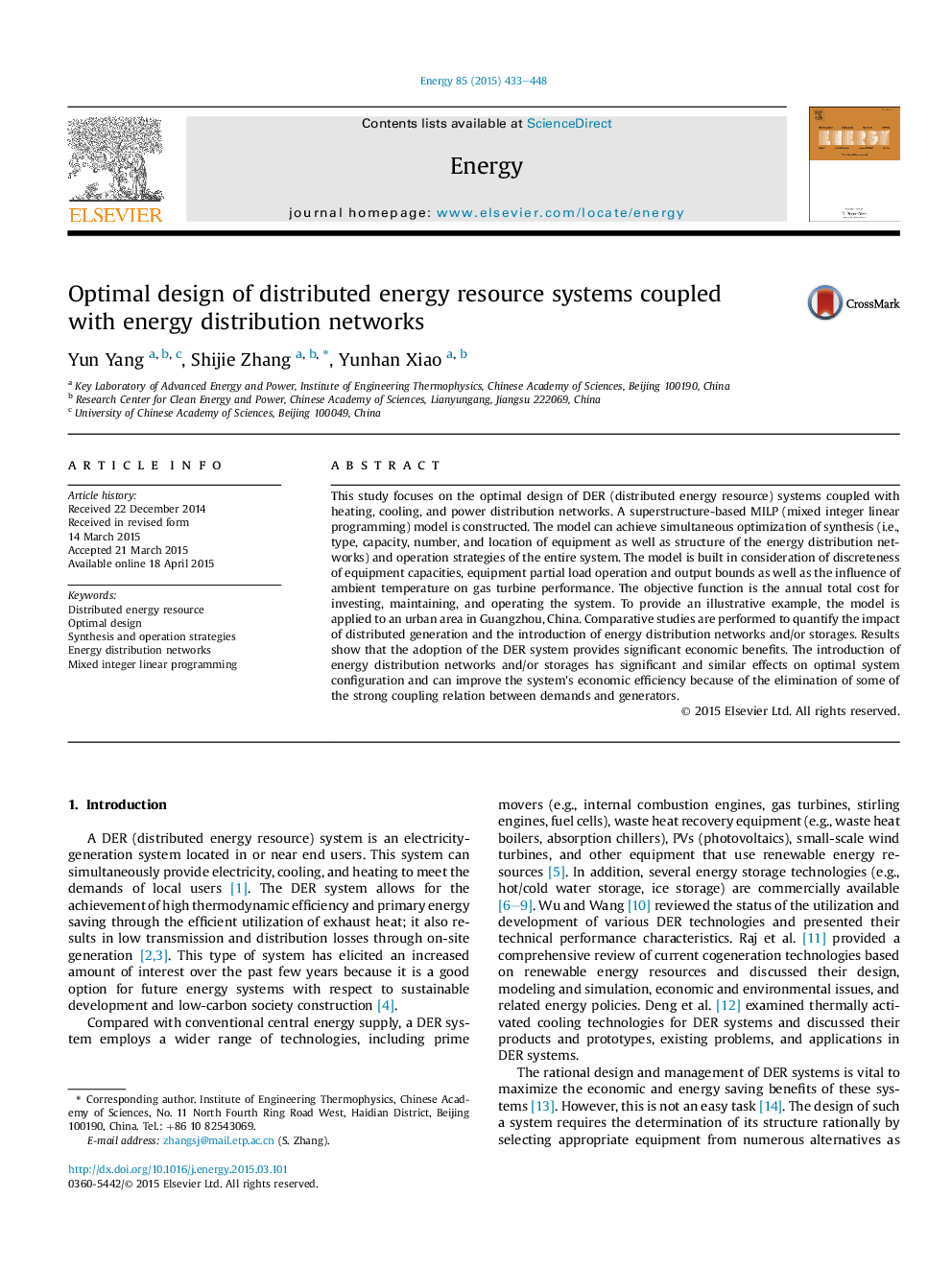| Article ID | Journal | Published Year | Pages | File Type |
|---|---|---|---|---|
| 1732089 | Energy | 2015 | 16 Pages |
•An MILP model is built to design distributed energy resource systems for urban areas.•The introduction of networks and/or storages has similar effects on optimal system design.•The introduction of networks and/or storages can improve economic efficiency.•Gas engines are found to be the most appropriate power generation equipment.•Optimal DER systems are found to reduce the annual total cost by 20%–25%.
This study focuses on the optimal design of DER (distributed energy resource) systems coupled with heating, cooling, and power distribution networks. A superstructure-based MILP (mixed integer linear programming) model is constructed. The model can achieve simultaneous optimization of synthesis (i.e., type, capacity, number, and location of equipment as well as structure of the energy distribution networks) and operation strategies of the entire system. The model is built in consideration of discreteness of equipment capacities, equipment partial load operation and output bounds as well as the influence of ambient temperature on gas turbine performance. The objective function is the annual total cost for investing, maintaining, and operating the system. To provide an illustrative example, the model is applied to an urban area in Guangzhou, China. Comparative studies are performed to quantify the impact of distributed generation and the introduction of energy distribution networks and/or storages. Results show that the adoption of the DER system provides significant economic benefits. The introduction of energy distribution networks and/or storages has significant and similar effects on optimal system configuration and can improve the system's economic efficiency because of the elimination of some of the strong coupling relation between demands and generators.
